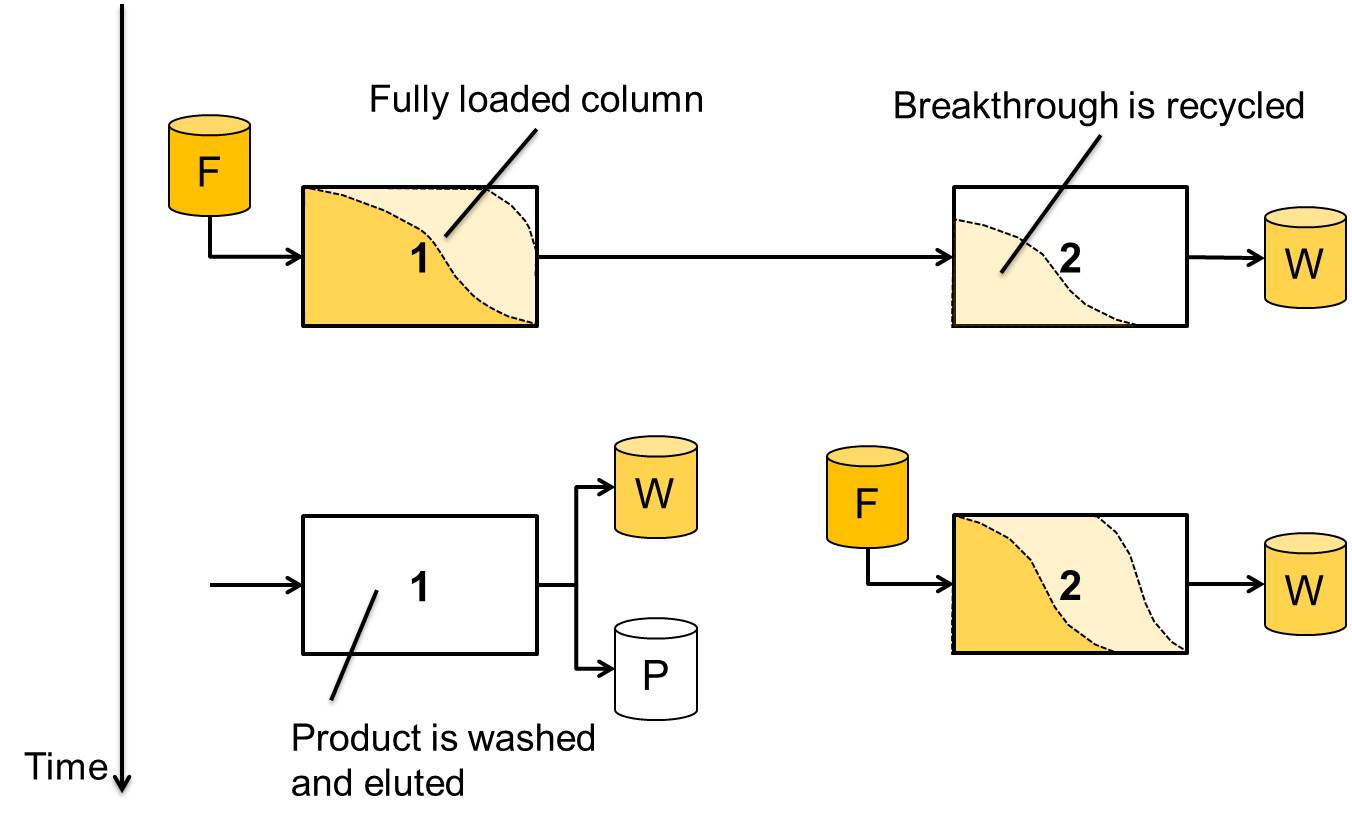Model-based design and optimization of multi-column chromatographic processes
Chromatography is the main driver in the downstream purification of biopharmaceuticals. The use of multiple interconnected columns increases the performance of chromatographic capture and polishing steps. But the large number of degrees of freedom makes optimizing these processes by hand tedious or impossible. Therefore, modeling and numerical optimization techniques are used to gain process understanding and find optimal ways of operating these processes.
For capture specifically, the novel CaptureSMB processes for isolating monoclonal antibodies (mAbs) from cell culture supernatant and other multi-column affinity capture processes, such as periodic counter-current chromatography (PCC) or sequential multi-column chromatography (SMCC) are under investigation.
For the polishing step, the main focus lies on the multi-column solvent gradient purification (MCSGP) process, which offers a simple way of performing center-cut separations, as is usually the case in protein polishing steps.
Contact Person: Daniel Baur
